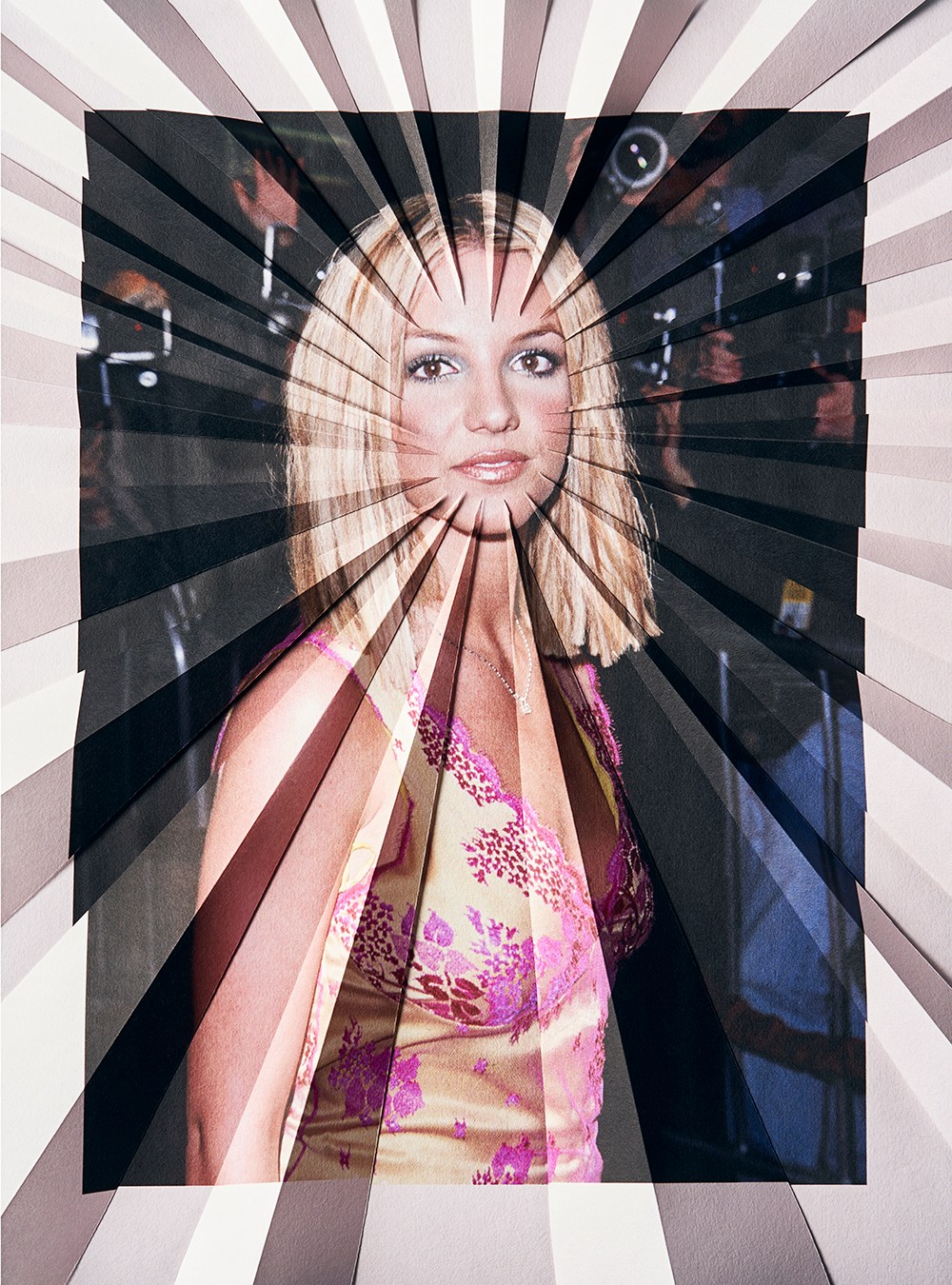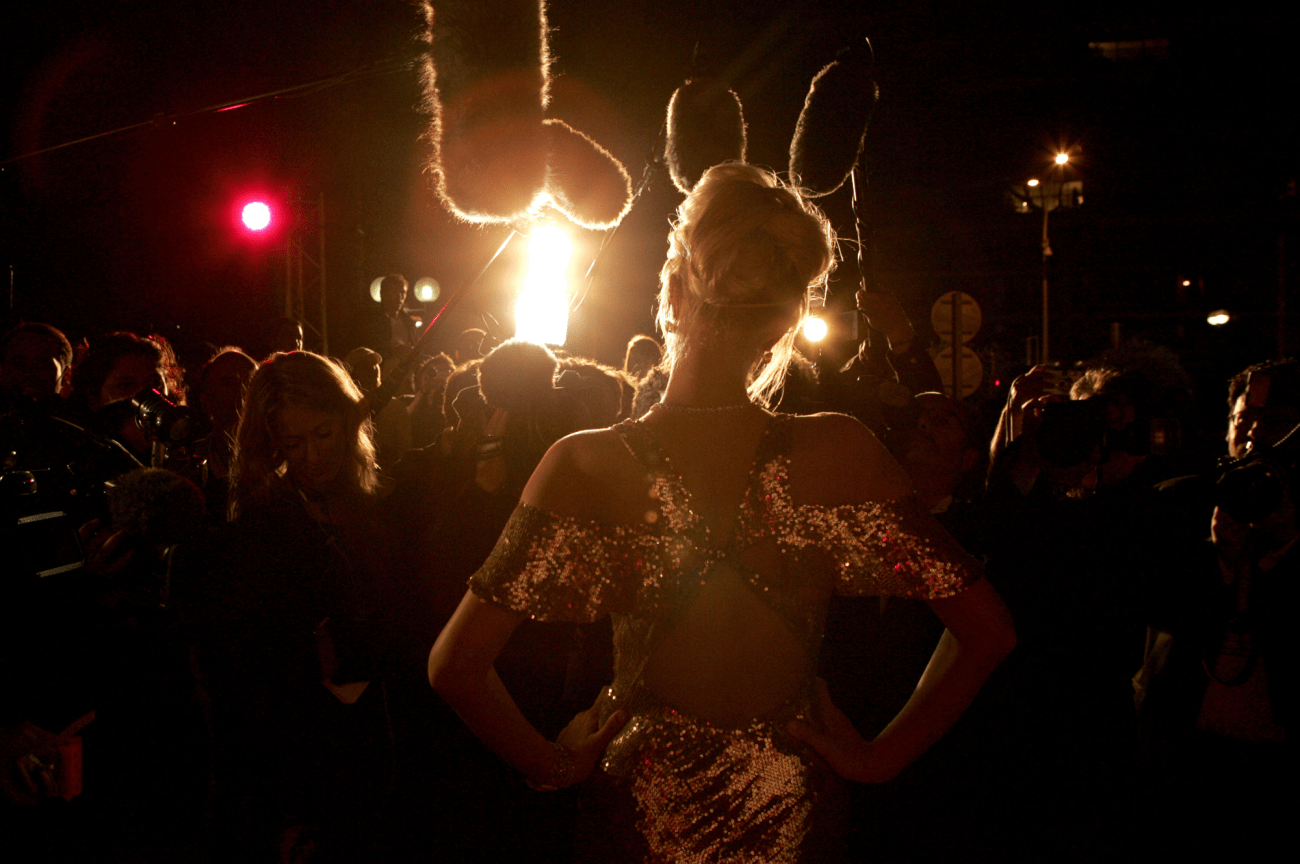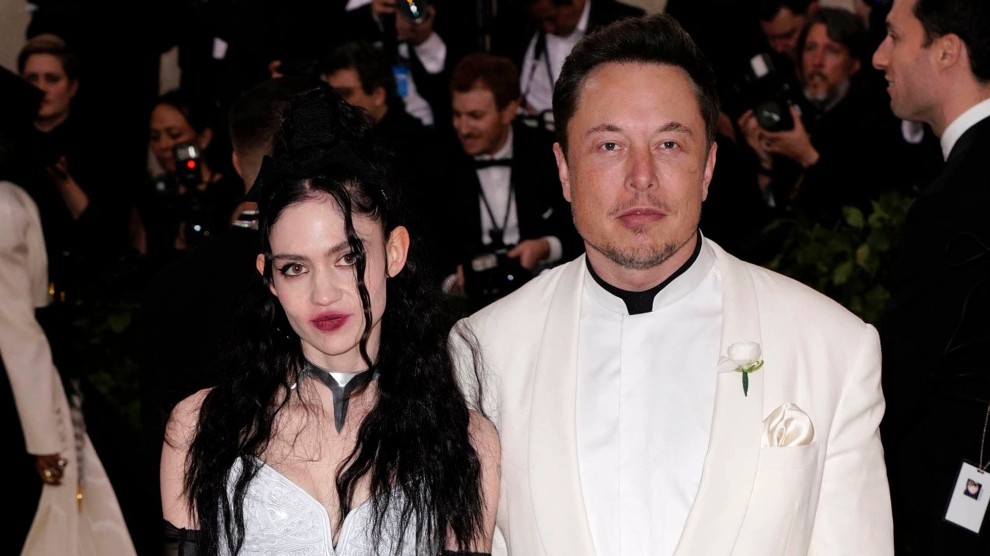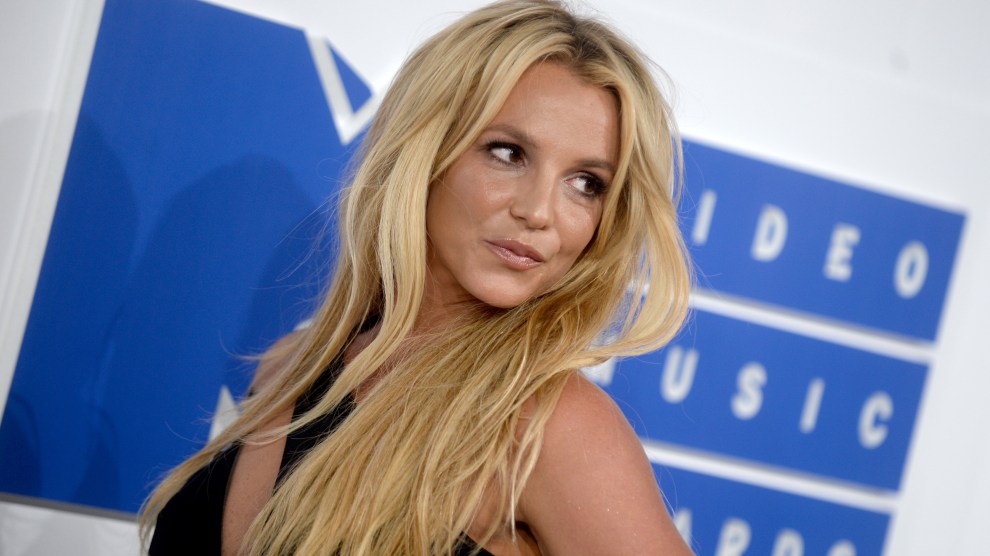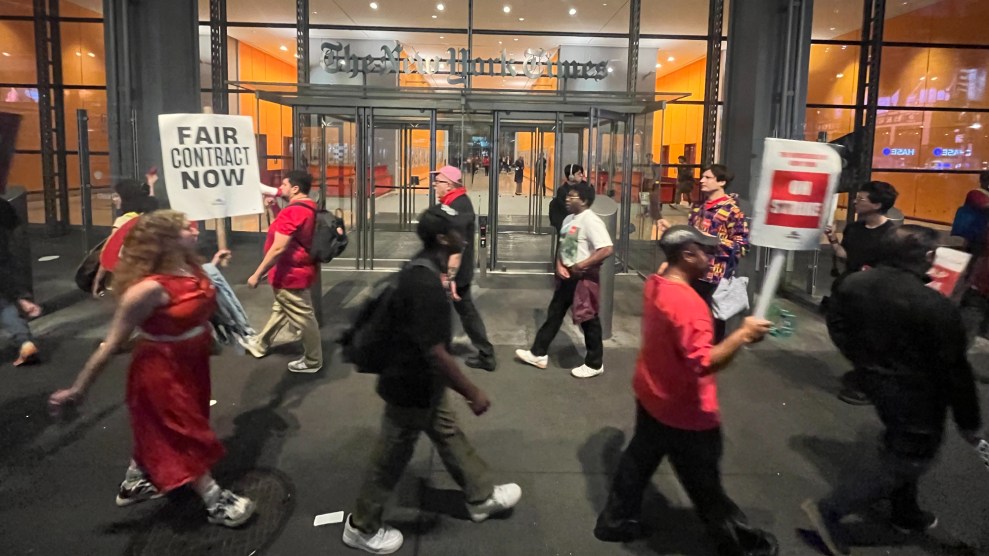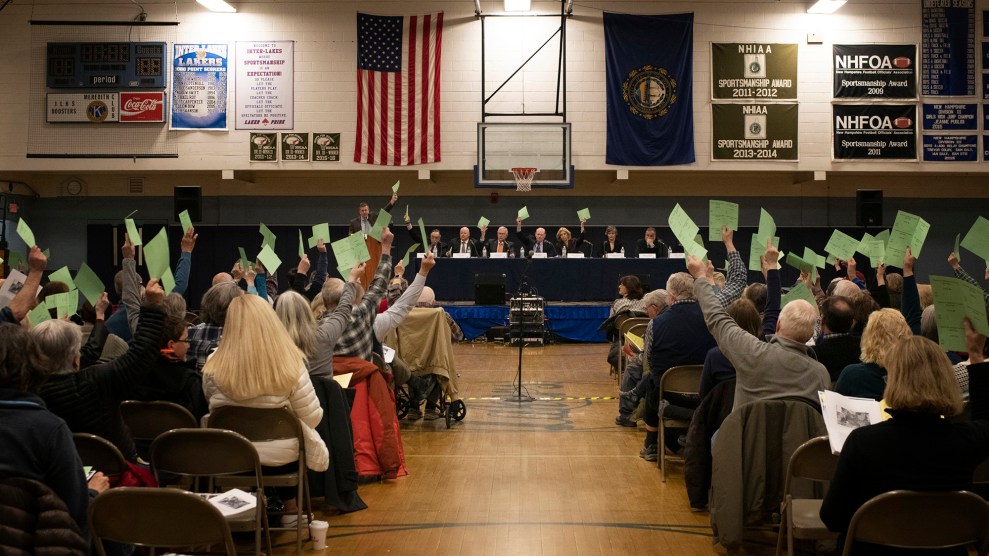They stumble out of the club, tipsy and teetering in heels. Two blonds and a brunette pile into a two-seater Benz. It’s a rainy night in the city of angels, lit by flashbulbs. Men clamber on the car, screaming their names. The next morning, a paparazzi shot of the trio—Britney Spears, Paris Hilton, and Lindsay Lohan—is on the front page of the November 29, 2006, edition of the New York Post above a boldfaced headline: “Bimbo summit.”
“I didn’t love the wording,” Hilton would later write in her book, Paris: The Memoir. But back then, the media machine begged to differ, and what was going on in these girls’ heads wasn’t what we wanted to know anyway. We wanted to watch them fall apart and fall from grace; we wanted to look at their bodies and laugh at their vocal fry. People purchased the bimbo summit issue en masse. Fifteen years later, it is iconic: stamped onto stickers, T-shirts, crop tops, posters, iPhone cases, and car sunshades (Hilton’s personal favorite). It has been rendered as an oil painting and exhibited in galleries.
This year, three of the aughts’ most maligned and idolized starlets have finally become authors of their own stories. Now, the “bimbos” have become women, and perhaps more importantly, businesswomen. In the process, they have re-written many of the narratives they once read about themselves, attracting readers with the same lurid tales they claim to hate hearing. Call it the media mistreatment memoir. Hilton released Paris: The Memoir in March and Pamela Anderson published Love, Pamela last January. The most recent, and perhaps most hotly anticipated, addition to this canon is Britney Spears’ pointedly titled The Woman in Me, which hit shelves at the end of October.
These books arrive amid a broader reconsideration. For the past few years, the press has been on something of an apology tour, acknowledging its rankly misogynistic behavior. In recent documentaries about Spears and Hilton, a former Us Weekly editor admits to running exploitative coverage, paparazzos remember taking their car chases too far, and celebrity journalists recall writing reductive, cruel articles. Spears, in her book, casts the bimbo summit vividly in this light, including it in a long litany of media misdeeds. She accuses the public of policing her every move, and refusing to allow her to escape from the purgatory of not a girl, not yet a woman. (“At what point did I promise to stay seventeen for the rest of my life?” she asks.)
Fans, too, have been reconsidering the past few decades. This new crop of memoirs allows us to announce our own moral evolution. We have permission to gawk. Now, we can reopen the burn book guilt-free—because, this time, the girls wrote it.
But as we ravenously devour the new books, are we really repenting for all that ogling and rumor–mongering? Or are we just doing what we’ve always done: salivating over female celebrities’ stumbles and sex lives?

The media mistreatment memoir is not new; famous women have been begging for a microphone since we started stranding them on pedestals. Celebrity autobiographies have been around since the Victorian era, and have always been artifacts of a power struggle. First, news outlets translate famous women’s lives into tragic morality tales. Then, women try to change the narrative, attempting to drown out the rumors with their own voices.
Consider the French actress Sarah Bernhardt: called “the most famous woman in France” in 1880, her antics and her fans’ devotion rendered her “unequalled” as a “purveyor of good copy.” She was mercilessly mocked and accused of artifice—journalists deemed her work “childishly egotistical” and the woman herself “cold, false, and affected.” In 1907, Bernhardt published her memoir My Double Life to correct the record. She explains the way “gossip with its thistle-down wings took flight in all directions” in the wake of various scandals and promises her readers the real story to replace the “turpitudes which were written about me.”
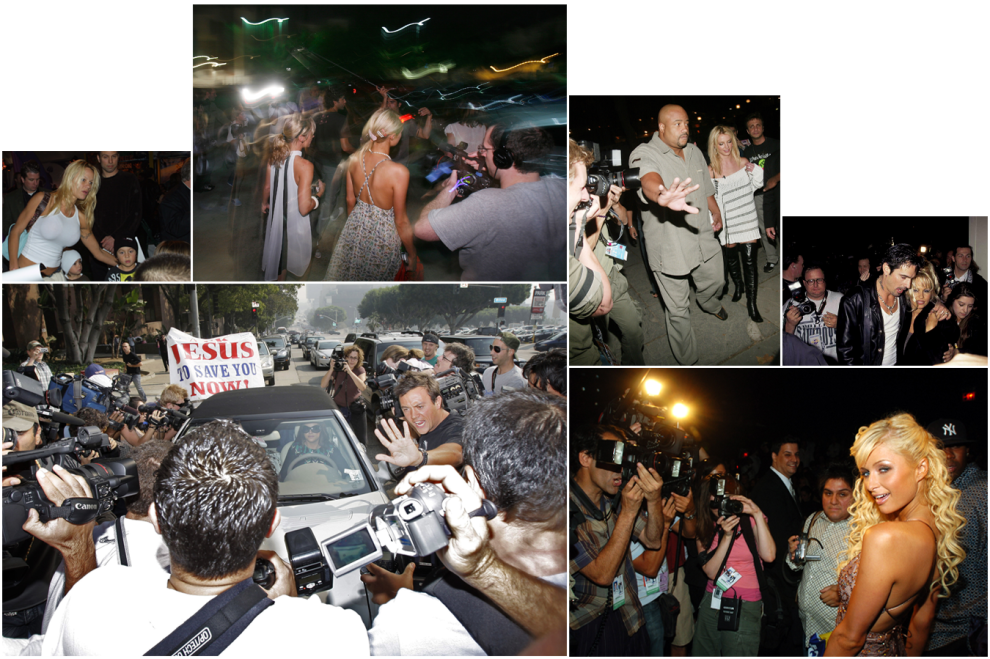
In the 2000s, paparazzi followed starlets closely in dehumanizing ways.
Robert Millard/Zuma; Chris Weeks/WireImage/Getty; Evan Agostini/Getty; Ron Galella/Ron Galella Collection/Getty; Dimitrios Kambouris/WireImage/Getty; Kevork Djansezian/AP
English scholar Sharon Marcus, in her 2019 book, The Drama of Celebrity, uses Bernhardt as a cipher to reveal an under-discussed facet of celebrity culture: Where leftist intellectuals since Frankfurt School critical theorist Theodor W. Adorno have construed “the culture industry” as a straightforward instrument of “mass deception” that renders fans “gullible, fickle…passive fools,” Marcus sees not a simple case of misinformation, but an ever-shifting, tendriling web of power plays and novel narratives. She proposes that “celebrity culture is a drama involving three equally powerful groups: media producers, members of the public, and celebrities themselves.”
Instead of a malignant media establishment poisoning the idiotic, if innocent, public by using celebrities as pawns (and in turn, transforming stars into wealthy victims), Marcus offers a far less stable dynamic, in which we are all complicit. From this angle, the rejuvenation of the media mistreatment memoir in our social media age makes more sense—as does its long history. (This is a canon that includes memoirs by Mary Astor, Jane Fonda, Brigitte Bardot, and Elizabeth Taylor.) These memoirs attempt to snatch narrative agency away from the press while remaining in its headlines. They address fans directly, functioning simultaneously as love letters, thank you notes, and delicately phrased yet desperate pleas for privacy.
Each memoirist castigates a system that predicated their value on sexist tropes. In the books, it becomes clear that the archetypes functioned like corsets: cutting off airflow and causing pain, even as they attracted attention and praise. Anderson, who rose to fame as a Playboy Bunny and became a worldwide household name during her star turn on Baywatch, is, as she hopes to show us, “a far cry from what people thought of me.” She is not defined by her “boyfriends and boobs,” or that infamous stolen sex tape—a “crime” that “ruined lives” and was “one of the most difficult things I’ve ever gone through.” Her book presents a well-read, politically inclined poet; it is both TMZ fodder and feminist memoir, stitched together with free verse. Pocked with political gossip, galaxy-brain celebrity link-ups, Victorian literary references, Jungian psychology, parenting advice, and fleshy pleasures, Love, Pamela is, like the woman who wrote it, complicated, inspiring, and occasionally ridiculous—at times difficult to believe but always easy to trust.
Hilton’s book surprises too, painting a portrait of a consummate entrepreneur-cum-influencer who instrumentalized her ditzy blond image to finagle financial freedom from her family. She recounts her abuse in the troubled teen industry, meditates on the evolving nature of celebrity in the Instagram era, and explores her journey to make peace with her ADHD diagnosis. Also (in)famous for a sex tape leaked without her consent, Hilton’s sexuality is central to the plot, but not in the vein the media spent years bleeding dry. Rather than the sex-crazed bimbo we read about, Hilton is a woman who spent years sure she was asexual.
Similarly, Spears indicts the press and the public for sexualizing her as a teenager, conflating her worth with her weight, and refusing to afford her the grace given to male stars when they misbehaved. “People seemed to experience my body as public property: something they could police, control, criticize, or use as a weapon,” she writes, and “no one could seem to think of me as both sexy and capable, or talented and hot. If I was sexy, they seemed to think I must be stupid.”
After her breakup with Justin Timberlake, his partying and sexual escapades were considered “cute,” while Spears’ choice to wear a sparkly bodysuit led to a “governor’s wife saying she wanted to shoot me.” Her actions were quickly cast as “out of control and crazy.” Spears understands her demonization in the press as one more chapter in a hefty feminist history that goes back to the Salem witch trials, writing that her treatment “reminded me of what I’d always heard about the way they’d test to see if someone was a witch in the olden days.”
In their quest to rebrand themselves, all three women position themselves as activists. Hilton campaigns against the carceral troubled teen industry; Spears argues against the misuse of conservatorships and the rampant misogyny that allowed hers to happen; Anderson poses on PETA billboards and travels to the Kremlin to free imprisoned whales, before embarking on an “invigorating, sexy, and funny” friendship with Julian Assange that also involves campaigning for his freedom.
They are willing to get political, but only to a point. Anderson’s feminism finds unstable footing in her glowing memories of the Playboy mansion, where sexual assault has occurred; Hugh Hefner and his mansion receive nothing but gratitude and fond reminiscences here. Anderson also writes romantic passages about her third husband Rick Salomon, and refers to him as a “great friend to this day.” She does not mention the fact that Salomon is the man who, as Hilton alludes to in her own memoir, made a sex tape with Hilton when she was a teenager; in a later interview, Hilton calls him “a very bad person.”
In moments like these, politics can feel performative. Hilton’s anti-carceral efforts against the troubled teen industry stop short of connecting to larger decarceration campaigns, despite her time in jail. Spears gestures at activism obliquely, writing that she hopes her “story will make an impact and make some changes in the corrupt system,” without mentioning any specific efforts to do so. These books center their stars as moral beacons, and cast the fans that follow them as well-intentioned, if obsessive, devotees. In the end, this is a tidy narrative that comes with a cost. The starlets stay trapped in their gilded cages, and we’re left wondering if they really want out.

The girls grew up. Supposedly, the media did too.
In her memoir, Hilton praises an example of this new maturity: A 2021 Nylon article about the ultimate “triumph” of the bimbo summit. The piece claims that 2006 society “had yet to grasp the concept of empathy,” paving the way for a press “system that thrived off incessant exploitation.” The writer then lauds each starlet’s more recent successes: Hilton’s activism, Spears’ freedom from her conservatorship, and Lohan’s Netflix movie.
But before we get there, we read a recapitulation of the same sensationalizing, sexist story the Post originally told: How Hilton and Lohan’s “famed friendship quickly turned into animosity that obliterated ambitions and endeavors,” with a reference to the “brutal moniker ‘fire crotch’” Lohan was slapped with by Hilton’s ex-boyfriend. This re-evaluation tells us that aughts-era “paparazzi, media outlets, and internet commentators descended like vultures.” But in many ways we are still picking over the same scraps of flesh, too.
The piece claims that while the photo “aimed to maim reputations,” it became a symbol of “both hope and redemption.” But then the article congratulates each woman on their recent romantic successes—their attachment to men is still all anyone seems to care about.
How much has actually changed? Coverage of the recent crop of memoirs is still laced with the same biases journalists brought to their reporting on these women in the 2000s. The reviews of Hilton’s memoir fixate on her sex tape. A Guardian story comments that “she might also have mentioned the sex tape” in a section of the book wherein she lists her professional qualifications, a tape it (disturbingly) describes as the moment Paris’ “clitoris became clickbait.”
Variety, People, the Washington Post, Esquire, Buzzfeed, Business Insider, and the Daily Beast all found a throwaway anecdote about Anderson walking in on a male celebrity having a threesome in the bathroom of the Playboy mansion worthy of central placement in their reviews. Journalists even expressed frustration that she doesn’t delve deeply enough into the scandal she explicitly attempts to de-center. The Los Angeles Review of Books complains that Anderson’s “sex-tape scandal is relegated here to a single chapter” which leaves readers with “unsettled questions.”
Spears’ memoir, breathlessly awaited, is no exception—much of the coverage centers not on Spears but on her ex-beau Justin Timberlake. Articles might be calling him out for his misogynistic portrayal of Spears in interviews and his music, but they are still placing him center stage. The media claims it has matured, but it’s still writing for the same audience, and despite what we might want to believe about our own evolution, we’re still clicking on sizzle reels.

One day in 2007, a desperate man sought redemption from an unlikely source: a celebrity socialite. Salvation is hard to come by in spotlit Los Angeles, but he was a dreamer. Like many such starry-eyed men, he thought a beautiful woman might be able to forgive him. He had made his living blackmailing celebrities, foraging through their virtual trash and abandoned storage units for scraps of potential shame, which he then sold back to them or the press, depending on who was bidding higher.
“The Sultan of Sleaze” now had a trove of Paris Hilton’s private papers in his sweaty hands. He’d already uploaded evidence of an abortion to the internet and seemed to be experiencing remorse. “Exhausted by his creepy life’s work and genuinely interested in finding some form of redemption,” he reached out to Hilton’s fixer for a meeting, but “before the meeting could take place, the scandalmonger hanged himself in the shower,” Hilton writes. She concludes the chapter with her lesson from the incident: “Karma’s a bitch.”
Is it? Is she? Was he? Or are those of us raptly reading? How about the magazines that published the pictures? (“Media can be a bitch,” Anderson writes, “a weapon, or used for good.”)
The line between ardent fandom and disturbing obsession has always been blurred; stars have always had stalkers. Bernhardt faced acid attacks, and fans thronged outside her home. Spears spent many nights sleeping in her mother’s bed after a fan climbed through her window, hoping to sidle under her covers. In a harrowing chapter of Anderson’s memoir, she remembers walking into her own home’s guest room to discover “a strange woman with bleach-blond hair and black roots sleepily sitting up in bed, wearing my Baywatch bathing suit.” Anderson called the police, and the woman left her a letter. She wanted to tell her idol, “I dream of you.”
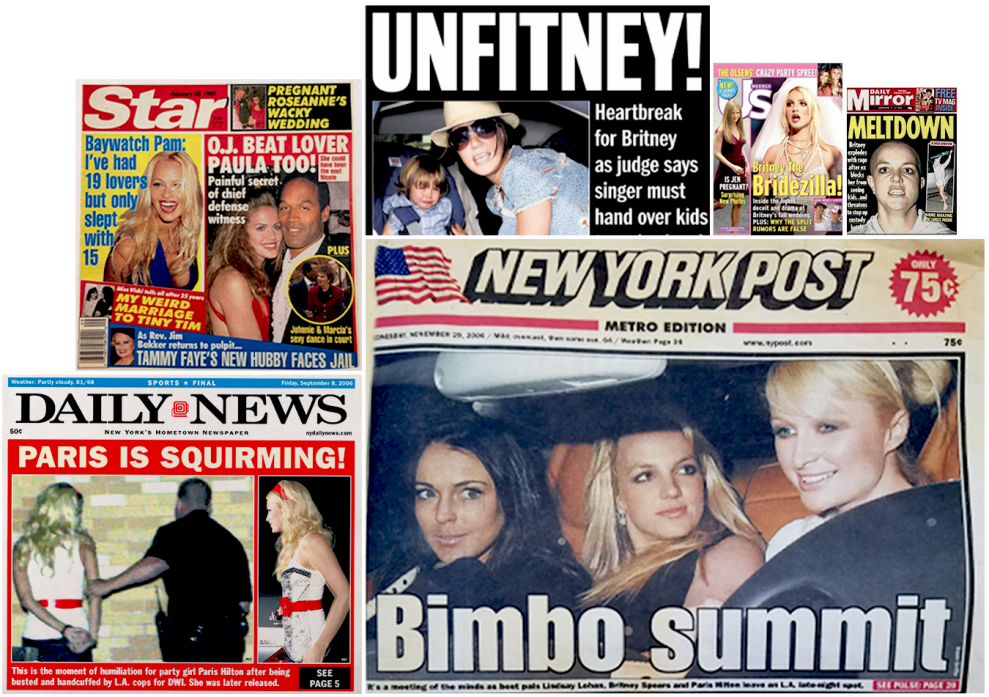
The media mistreatment memoir hopes to heal this dynamic. In doing so, it reveals the modern mechanism of obsession: Celebrities accumulate capital by staying in their fans’ good graces, which sometimes involves forgiving their trespasses, and even letting them feel like saviors. “This was the only relationship that ever seemed to work out,” Hilton writes of her fans, “me and all these people I don’t know.” With them, she continues, “it felt like love until I was alone at the end of the day.” Anderson describes celebrity as “a strange disease you couldn’t wash off.”
Marcus argues that celebrities “absorbed religious energies and roles” when Western society was becoming more secular in the industrial age, a transformation that has continued apace up to today. Hilton once discussed this with David LaChapelle, a photographer whose iconic shots of all three women helped cement their golden calf status in the aughts, and the two mused that “celebrity worship mimics religious ecstasy.” “People cried at a Beatles concert the same way they cried over a vision of Mary,” LaChappelle told her, “it’s the same well of tears.”
It’s that kind of devotion that characterized the #freebritney movement, the fan-led campaign to release Spears from her conservatorship. Perhaps the fans of #freebritney were in part motivated by a desire for absolution, to redeem themselves for the rabid pursuit of their idol in the aughts, when their adulation ended up pushing Spears to the brink. The conservatorship was put in place in the wake of mental health struggles Spears attributes in part to her divorce and grief after the death of a relative, but also in part to the pressure placed on her by the public. Still, in her memoir, Spears remains awed and grateful for #freebritney, calling the first videos of people protesting on her behalf “the most amazing thing I’d ever seen in my life.”
Spears and Hilton often position their fans and the press as opposing, outmatched forces, allowing journalists to play Goliath while fans play David, in the process freeing fans from any guilt over their own aughts-era engagement in their idols’ exploitation. After the release of Spears’ anti-conservatorship court documents in which Spears’ lawyers stated that the pop star appreciated her fans’ support, a #freebritney organizer said “we’ve always known our movement was on the right side of history.” The Little Hiltons fall into lock-step behind Hilton’s campaign against the troubled teen industry, as she succeeds in arousing public outrage and eventually legislative action against facilities that have traumatized minors.
This reframing reflects our desire to reconceive fandom as a force for moral good, rather than simply fun. Given the longstanding misogynistic dismissal of fans as “crazed and hysterical” girls, as writer Erin Somers has put it, that is an overdue reconceptualization. It is also one that transforms fans from delusional obsessives to devoted social justice crusaders, a transformation that requires the existence of an ethical form of celebrity worship. Stars need fans; fans need something to satisfy their appetite. What these characterizations elide in their attempts to appeal to their audience is the fact that we, fans, are guilty too, always grasping at shards of these girls and in this process tearing them apart.

In the wake of her conservatorship, #freebritney fans find themselves adrift. A subset has turned on her, suggesting she might not be as sane as they thought. Some have developed conspiracy theories. When Spears stopped posting on Instagram for a period, fans panicked and called 911 while filming for Instagram Live, leading to law enforcement banging down her door. “Freedom” from the conservatorship has “given me back my womanhood,” Spears writes, with gratitude to the fans who helped her find it. But then she asks them for respect when her exercise of that freedom does not look like what they expected: “Freedom means taking a break from Instagram without people calling 911…it’s time for me not to be someone who other people want.”
In an overwrought poem I once wrote about Spears, I compared her to Jesus. It was mostly a metaphor, but when we buy her book and heart her Instagrams, aren’t we begging to be forgiven for our sins against Spears? We were sorry, so we set you free—but then we missed you, and the feeling that unlocking your handcuffs gave us, so we went looking for you in the fame you were trapped in for so long, the same one we thought we wanted to help you escape.
We know it was wrong, buying those tabloids, paging through the pictures with sweaty fingers, but when has knowledge ever been stronger than yearning? Writing this essay, I spent hours scrolling through a Tumblr account called Pop Culture Died in 2009, looking at all the leaked images Paris begged me not to pore over, the invasive paparazzi shots that enraged Britney, the photos that tore apart Pamela’s marriage. I once bought a set of friendship necklaces made of images of the bimbo summit. I loved these girls I didn’t know, and they made it easy to believe they loved me back.
“I see you, and I think it’s possible that we know each other better than one might think,” Hilton muses. “We have a connection, no matter where we are in space,” Spears writes to her fans. If “love is the quality of attention we pay to things,” as Anderson writes, then perhaps we should be asking ourselves what kind of attention we are offering the women we claim to love.
“I’m gonna write a book one day, a good mysterious book,” Spears said in 2008. One of her fans, commenting on a recent Instagram post, posed a perhaps unanswerable question, one our star didn’t answer: “What can we do to be good fans, Britney?”
Correction, November 10: A previous version of this story misstated how the New York Post presented its 2006 headline.
